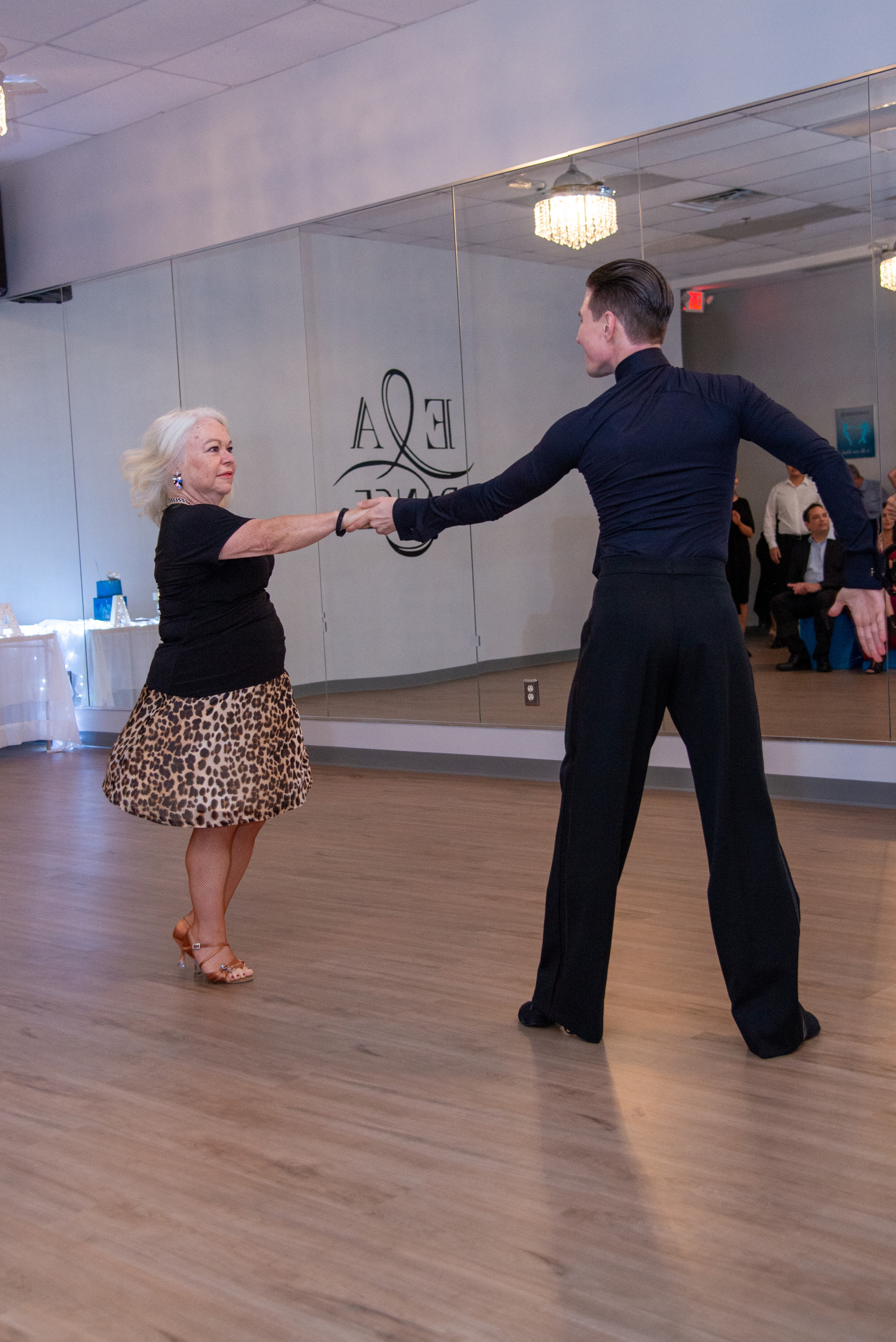West Coast Swing Dance Lessons Near Altamonte Springs, Florida
Looking to get private dance lessons near Altamonte Springs, Florida? We've got you covered! We are conveniently located in Ocoee and ready to help you on your dance journey!

West Coast Swing
West Coast Swing is a modern and versatile partner dance that originated in the United States in the 1940s. Here's a brief overview:
1. **Origin**: West Coast Swing evolved from Lindy Hop and other swing dances on the West Coast of the United States. It has since become one of the most popular forms of swing dance.
2. **Music and Tempo**: West Coast Swing is typically danced to contemporary pop, blues, R&B, or funk music. Unlike other forms of swing dance, West Coast Swing can be danced to a wide range of music styles, as long as it has a steady beat.
3. **Connection**: West Coast Swing is characterized by its elastic connection between partners. Dancers maintain a stretchy connection through their arms and maintain constant contact while dancing.
4. **Footwork**: The dance features six and eight-count patterns, including sugar pushes, underarm passes, tucks, whips, and various turns. Footwork is smooth and subtle, with an emphasis on connection, timing, and musical interpretation.
5. **Variability**: West Coast Swing is known for its improvisational nature and adaptability. Dancers can modify their footwork, styling, and patterns to fit the music and their personal preferences.
6. **Competitions**: West Coast Swing is popular in both social dancing and competitive environments. Competitions often include categories such as Jack and Jill, Strictly Swing, and Showcase divisions.
7. **Continued Evolution**: West Coast Swing continues to evolve, with dancers incorporating elements from other dance styles such as hip-hop, salsa, and contemporary dance. This ongoing evolution keeps the dance fresh and relevant to new generations of dancers.
Overall, West Coast Swing is a dynamic and expressive partner dance known for its versatility, connection, and musicality. It attracts dancers of all ages and backgrounds, making it a vibrant and inclusive dance community.